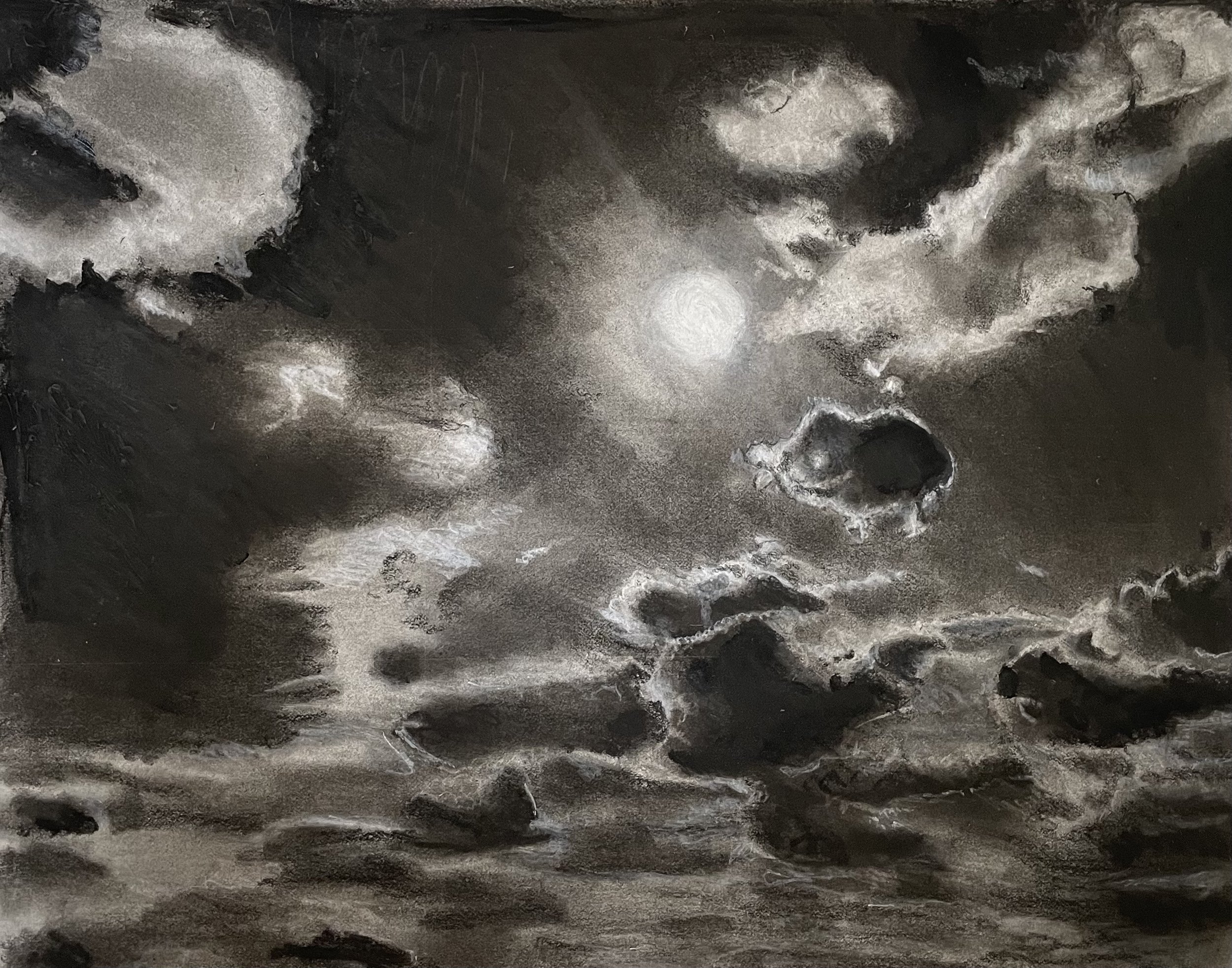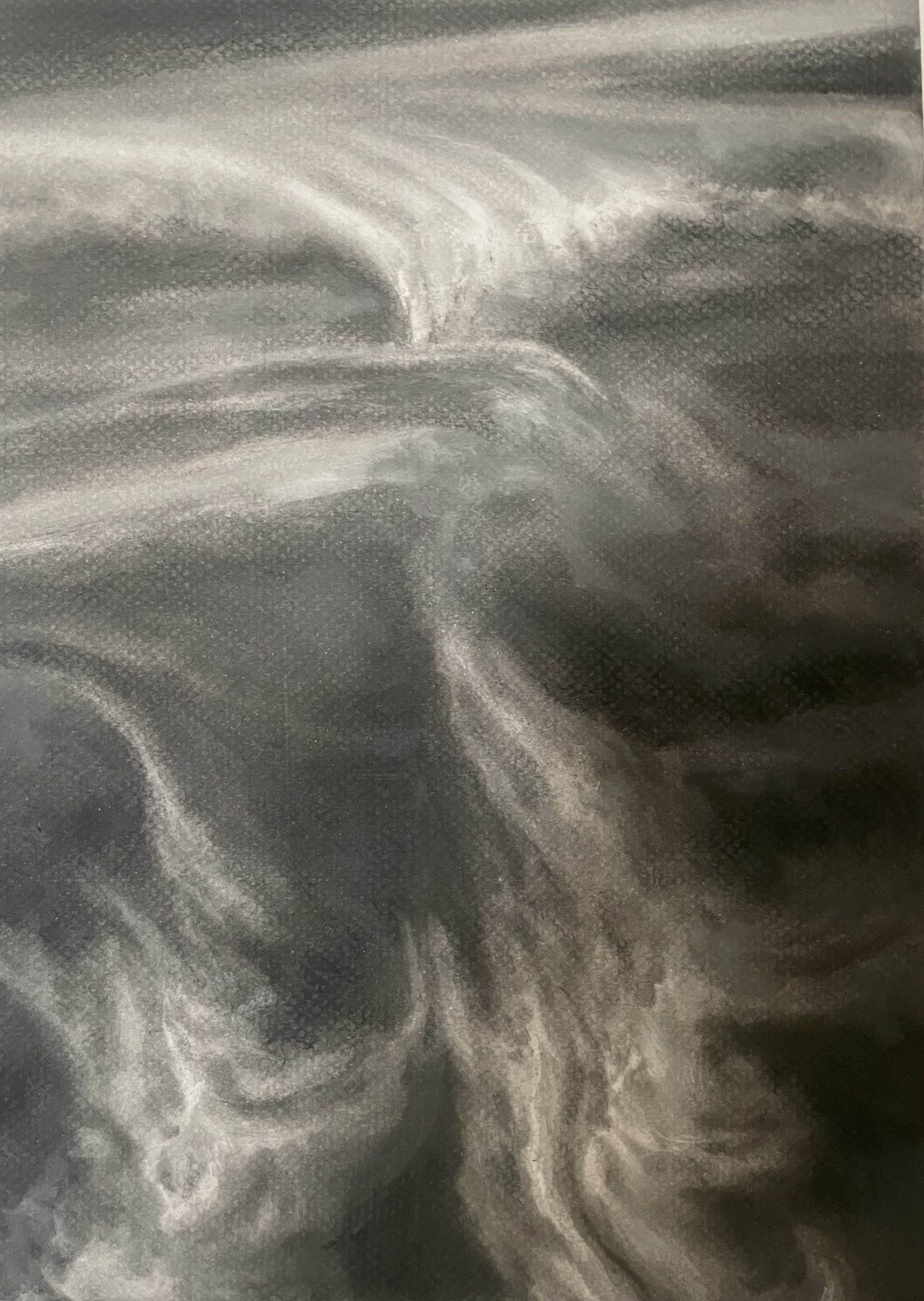No rules for clouds.
Light follows a predictable path from source to object. The object either obstructs the light or allows it to pass partially or fully through (translucence or transparence). Shadows are cast in the expected way.
Clouds, however, can be substantial walls that block light, vaporous substances that barely catch light at all, or screens reflecting all the colors of the heavens.
Sometimes monumental and immoveable, sometimes heavy, bruised and sullen. They lounge above mountains, faintly echoing their peaked shapes. Too lazy to manifest an independent form. At other times they are gauzy apparitions racing effortlessly across the sky. Shape shifters—swirling, threading, twisting, floating. Edges rounded, now jagged. Edges smudged, now sharply drawn. Dazzlingly luminous and bright as the sun itself. Shot through with lightening—glowing like lanterns from within.
In many landscapes the horizon line plays an important role in orienting the observer’s viewpoint. Here ‘landscapes’ are not, however, moored to the horizon. Unattached to the ground, clouds float indifferently above the territorial and migrational struggles of humans below. Without the heaviness of the horizon, dragging sky down to the earth, skies are not specific to a place. They could exist anywhere, any time.
We project our stories upon clouds. We compare them to ice cream, cotton puffs, or mashed potatoes. We see in them animals, angels, gods riding in chariots. We imagine clouds scattered on the floor of heaven or embedded in the ceiling of the skies. For 18th Century artist, John Constable, “The sky is the source of light in Nature and it governs everything” and that “It will be difficult to name a class of landscape in which the sky is not the key note, the standard of scale, and the chief organ of sentiment.” Clouds are the actors on the stage of the heavens. In their elusive and changeable states, they are apt metaphors for presence, absence, longing and the possibility of the numinous.
As we go about our busy lives we rarely look up to witness the monumental sky drama unfolding above us every day—yet subliminally we sense the disquieting changes brought on by wildfire smoke and fossil fuel pollution. Australian philosopher Glenn Albrecht coined the term "solastalgia" to describe "the homesickness you have when you are still at home", and is commonly applied to describe a home environment changing in distressing ways.
We harbor a vague sense of mourning, an unacknowledged longing for the sky our ancestors knew. Still, even as the skies are altered—hauntingly transient, endlessly variable—clouds persist.














